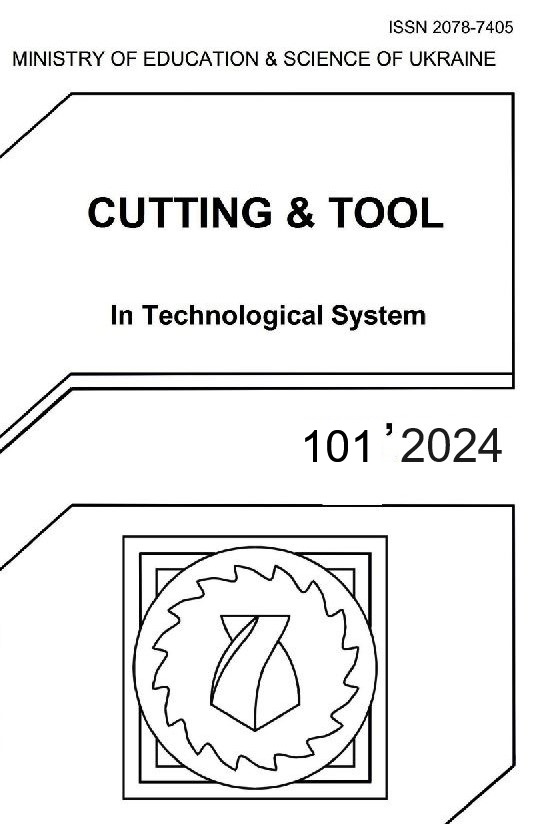ADDITIVE TECHNOLOGIES IN CONSTRUCTION: TECHNICAL, ECONOMIC AND MANAGEMENT ANALYSIS
DOI:
https://doi.org/10.20998/2078-7405.2024.101.10Keywords:
concrete 3D printing, construction, economic efficiency, project management, building materialsAbstract
The study is devoted to a comprehensive analysis of the introduction of additive technologies into modern construction production, revealing the technical, economic, and managerial aspects of concrete 3D-printing of architectural structures. The work systematically analyzes the evolution of additive manufacturing technologies and identifies the main structural types of 3D-printers (an additive machine for layer-by-layer construction of objects), including portal, robotic, mobile, and hybrid systems. A detailed study of the technological parameters of concrete 3D-printing with concrete mixtures is presented, in particular, optimal printing speed modes, layer parameters, criteria for shaping and quality of building structures. A comparative analysis of the technological capabilities of leading world equipment manufacturers, such as ICON, COBOD International, Apis Cor, and WinSun, is conducted. The economic analysis demonstrates significant advantages of additive technologies: reduction of construction time by 2-6 times, reduction of construction cost by 20-35%, and increase in the load-bearing capacity of structures. The study comprehensively explores the structure of capital and operational expenses associated with technology implementation. Special emphasis is placed on the management aspects of introducing additive technologies, highlighting the critical need for an interdisciplinary approach and knowledge integration across architecture, engineering, management, and computer modeling. The study determines the prospects for the development of concrete 3D-printing technology in the construction industry and outlines the main directions of further scientific research and practical implementation of innovative solutions. This study was developed between the Department of "Integrated Technologies of Mechanical Engineering" named after M. Semko of NTU "KhPI" and "Geopolimer" LTD to implement innovative technologies in the construction industry.
References
El-Sayegh S., Romdhane L., Manjikian S. A critical review of 3D printing in construction: Benefits, challenges, and risks. Archives of Civil and Mechanical Engineering, 20, 2020. pp. 1‒25.
Tay Y.W.D., Panda B., Paul S.C., Noor Mohamed N.A., Tan M.J., Leong K.F. 3D printing trends in building and construction industry: a review. Virtual and physical prototyping, 12(3), 2017. pp. 261‒276.
Zhang Y., Zhang Y., Liu G., Yang Y., Wu M., Pang B. Fresh properties of a novel 3D printing concrete ink. Construction and Building Materials, 174, 2018. pp. 263‒271.
Paul S. C., Tay Y. W. D., Panda B., Tan M. J. Fresh and hardened properties of 3D printable cementitious materials for building and construction. Archives of Civil and Mechanical Engineering, 18(1), 2018. pp. 311‒319.
Panda B., Tan M. J. Experimental study on mix proportion and fresh properties of fly ash based geopolymer for 3D concrete printing. Ceramics International, 44(9), 2018. pp. 10258‒10265.
Zhou W., Zhang Y., Ma L., Li V.C. Influence of printing parameters on 3D printing engineered cementitious composites (3DP-ECC). Cem. Concr. Compos. 2022, 130, 104562.
Buswell R.A., De Silva W.L., Jones S.Z., Dirrenberger J., 3D printing using concrete extrusion: A roadmap for research. Cement and concrete research, 112, 2018. pp.37‒49.
Wang J., Liu Z., Hou J., Ge M. Research Progress and Trend Analysis of Concrete 3D Printing Technology Based on Cite Space. Buildings, 14(4), 2024. 989 р.
De Schutter G., Lesage K., Mechtcherine V., Nerella V.N., Habert G., Agusti-Juan I. Vision of 3D printing with concrete — Technical, economic and environmental potentials. Cement and Concrete Research, 112, 2018. pp. 25‒36.
Sakin M., Kiroglu Y.C. 3D Printing of Buildings: Construction of the Sustainable Houses of the Future by BIM. Energy Procedia, 134, 2017. pp. 702‒711.
Kazemian A., Yuan X., Meier R., Khoshnevis B., Sanjayan J.G., Nazari A., Nematollahi B. 3D Concrete Printing Technology. 2019.
Overmeir A.L., Šavija B., Bos F.P., Schlangen E. 3D Printable Strain Hardening Cementitious Composites (3DP-SHCC), tailoring fresh and hardened state properties. Construction and Building Materials, 403, 2023. p. 132924.
Roussel N. Rheological requirements for printable concretes. Cement and Concrete Research, 112, 2018. pp. 76‒85.
Tinoco M. P., de Mendonça É. M., Fernandez L. I. C., Caldas L. R., Reales O. A. M., Toledo Filho R. D. Life cycle assessment (LCA) and environmental sustainability of cementitious materials for 3D concrete printing: A systematic literature review. Journal of building engineering, 52, 2022. 104456.
De Soto B. G., Agustí-Juan I., Hunhevicz J., Joss S., Graser K., Habert G., Adey B. T. Productivity of digital fabrication in construction: Cost and time analysis of a robotically built wall. Automation in construction, 92, 2018. pp. 297‒311.
Downloads
Published
Issue
Section
License
Copyright Notice
Authors who publish with this Collection agree to the following terms:
1. Authors retain copyright and grant the Collection right of first publication with the work simultaneously licensed under a Creative Commons Attribution License that allows others to share the work with an acknowledgement of the work's authorship and initial publication in this Collection.
2. Authors are able to enter into separate, additional contractual arrangements for the non-exclusive distribution of the Collection's published version of the work (e.g., post it to an institutional repository or publish it in a book), with an acknowledgement of its initial publication in this Collection.
3. Authors are permitted and encouraged to post their work online (e.g., in institutional repositories or on their website) prior to and during the submission process, as it can lead to productive exchanges, as well as earlier and greater citation of published work.

